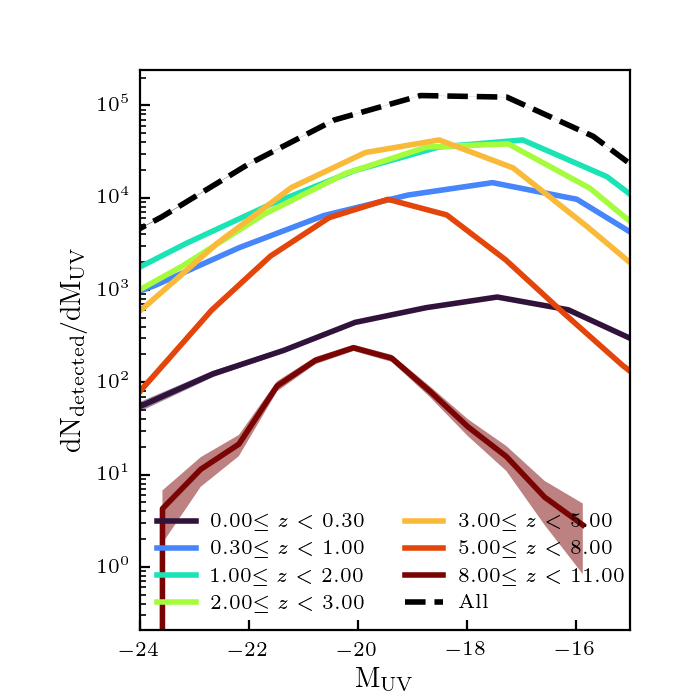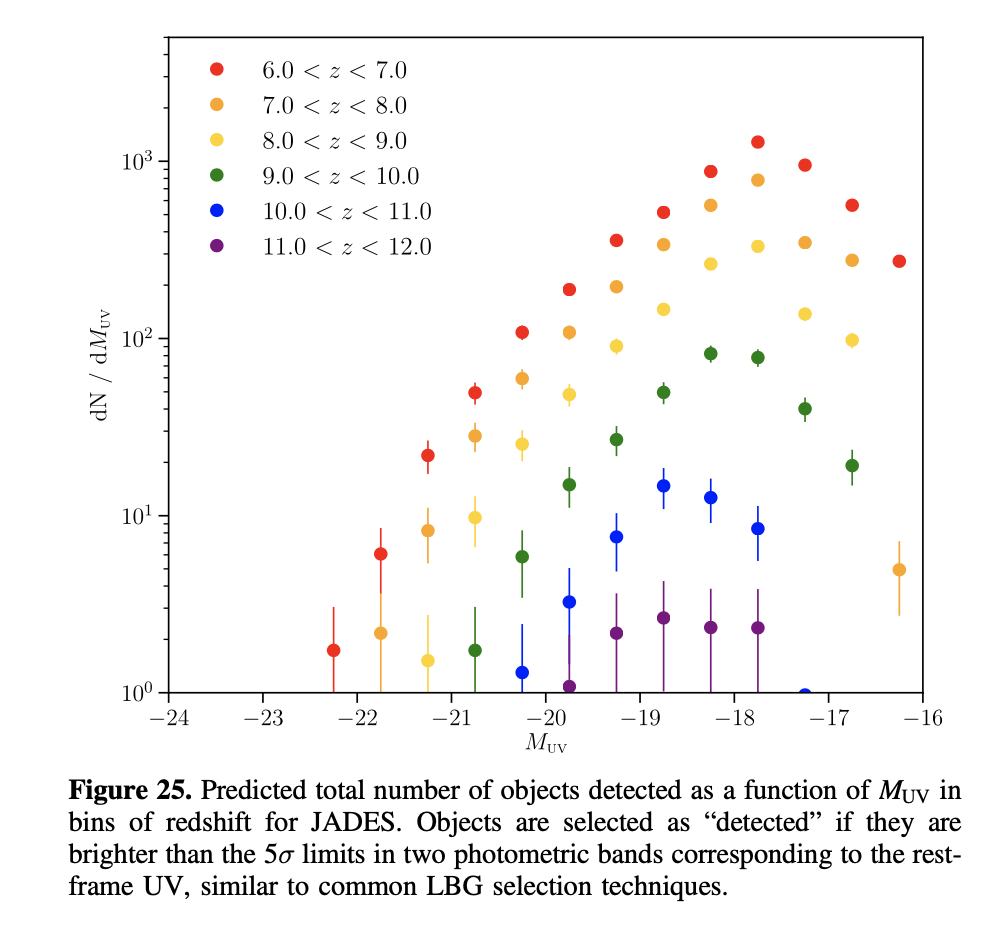Nicole Drakos
Research Blog
Welcome to my Research Blog.
This is mostly meant to document what I am working on for myself, and to communicate with my colleagues. It is likely filled with errors!
This project is maintained by ndrakos
Mock Catalog Detection Predictions
The galaxies now have SEDs, and we have a method for determing if they are detected. Though there are a number of issues to sort out, we can make some preliminary predictions with this.
In general, I will calculate the desired quantities using only the detected galaxies, but then correct for the expected completeness. This will allow us to get a more accurate idea of the uncertainties on the measurements.
Fraction of Detected Galaxies
If we plot the fraction of galaxies in the catalog that are detected, we get the following:
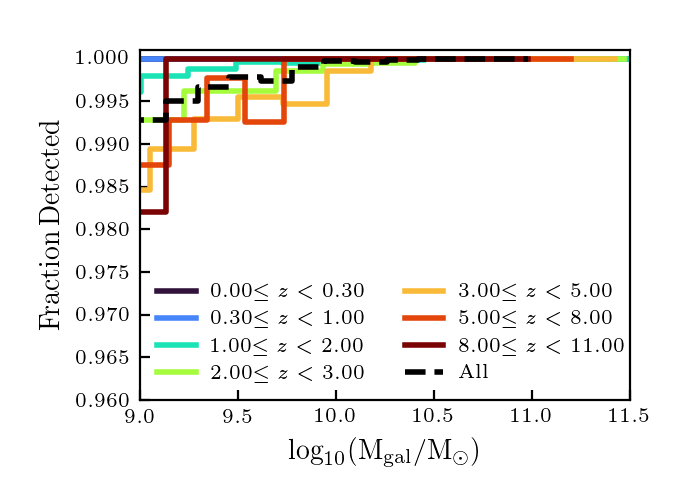
While the redshift and mass trends make sense, the fraction of galaxies detected is higher than I had expected. I wonder if the galaxies are too bright… The UV magnitudes did seem brighter than expected, though this was mostly at low redshifts.
Number of Detected Galaxies
With this, the number of galaxies we expect to predict is:
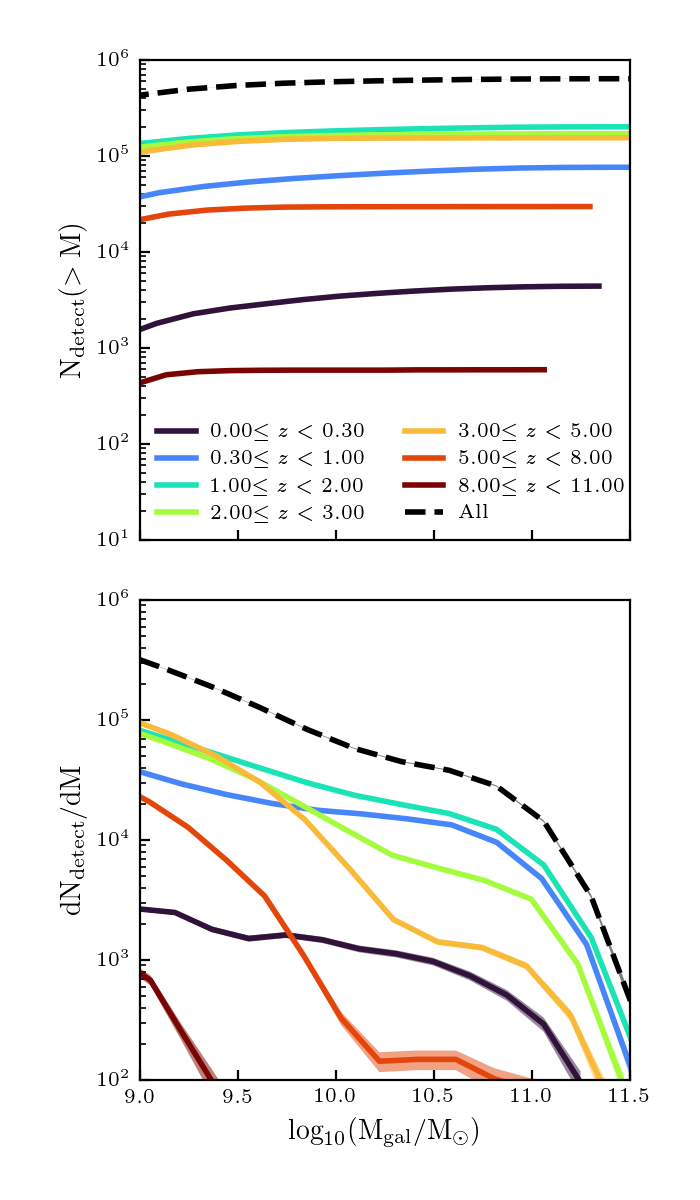
And if we break that into star-forming and quiescent galaxies :
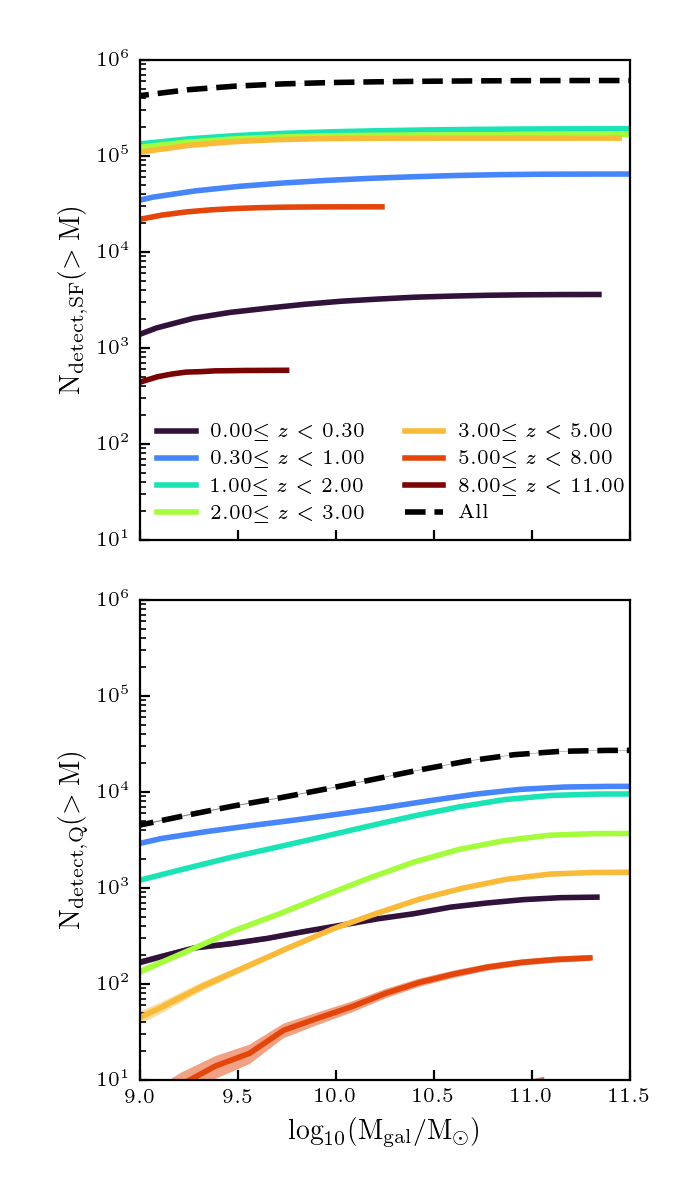
Stellar Mass Function
We can also recover the stellar mass function.
I used only the detected galaxies, but then rescaled the SMF by \(1/x\), where \(x\) is the fraction of galaxies detected in that mass/redshift bin.
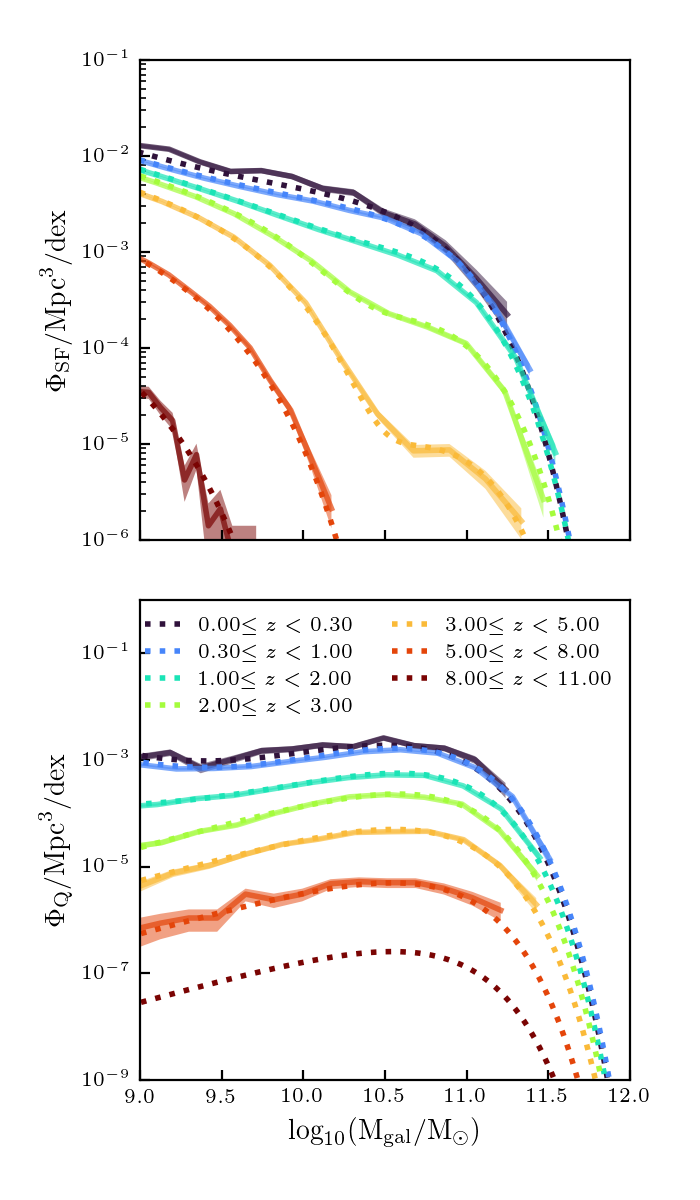
Luminosity Function
The predicted luminosity function is:
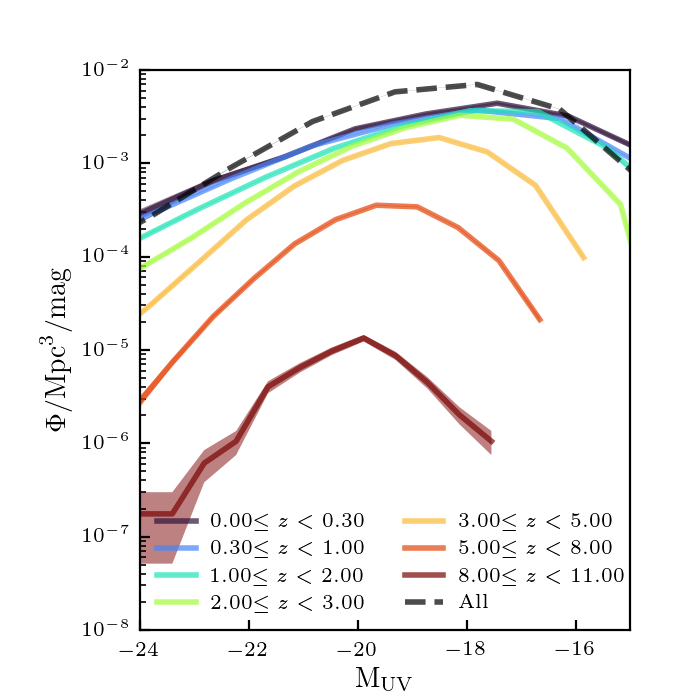
This doesn’t look quite right… though the turn over could be because I am not resolving enough faint low-mass galaxies (right now the results are for the \(512^3\) simulation)—see for example Fig 17. from W18
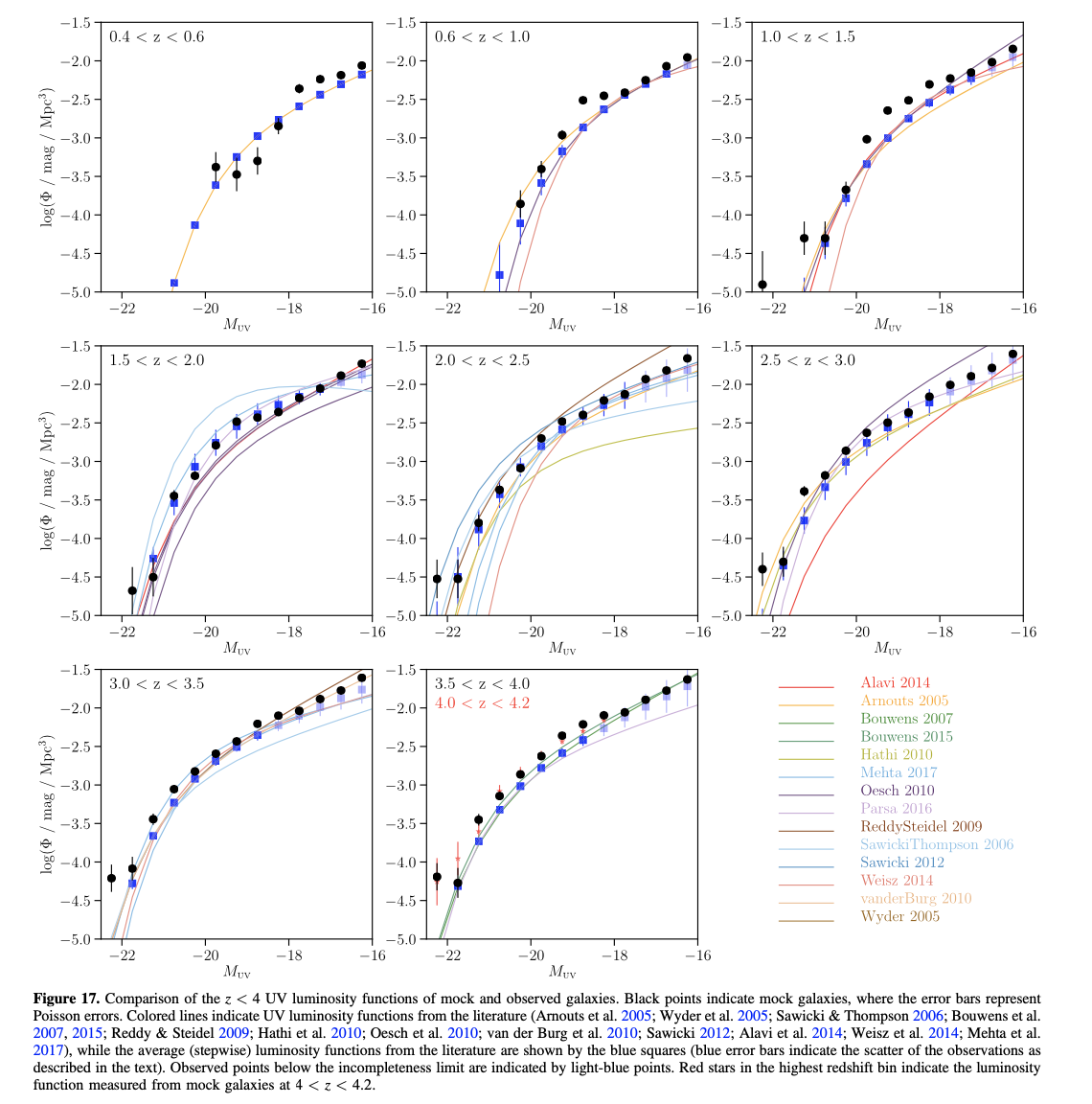
I also plotted \(dN/dM_{\rm UV}\) to compare from the JADES predictions (Fig, 25 in W18).
